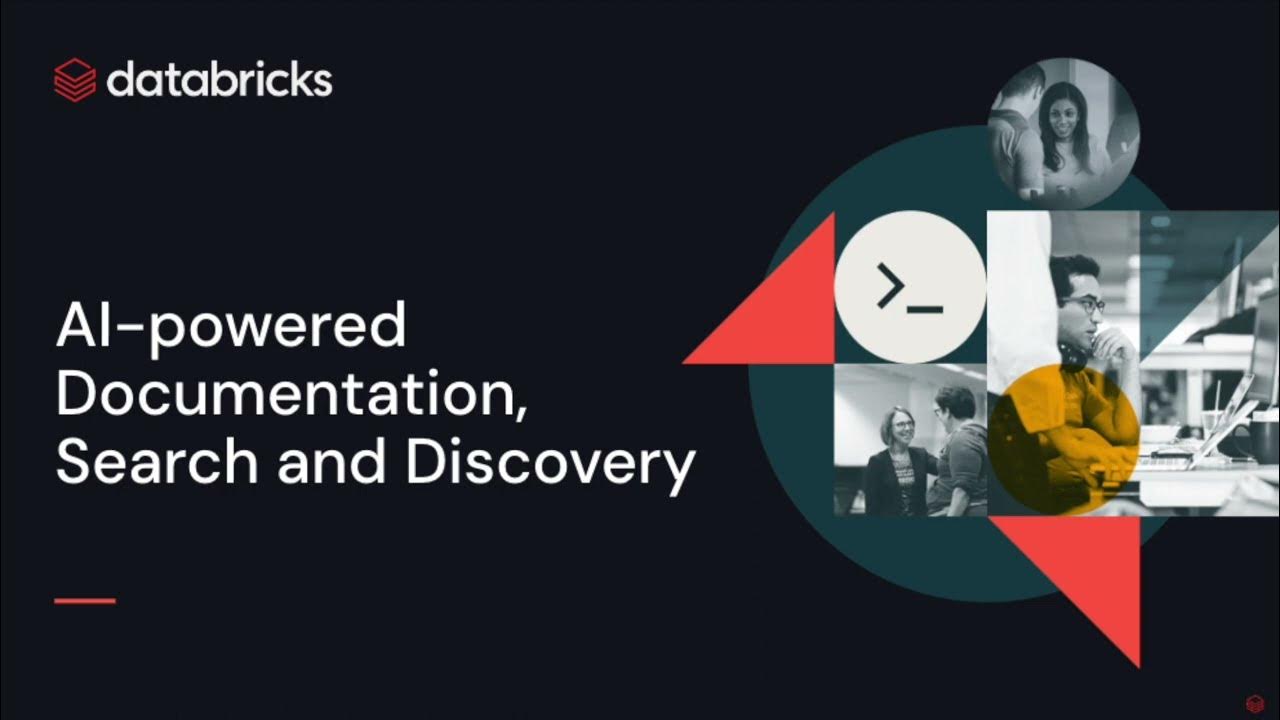Data Lineage with Unity Catalog
Summary
TLDRIn this video, Pearl, a technical marketing engineer at Databricks, demonstrates how Unity Catalog captures real-time data lineage across all data objects. The lineage helps data teams perform root cause analysis, reducing debugging time and ensuring compliance. Pearl walks through a use case involving a loan dataset, showing how lineage is tracked from notebooks to dashboards, and across various data sources. The interactive lineage graph and detailed tracing capabilities are highlighted as key features for maintaining data quality and streamlining auditing processes.
Takeaways
- 🌟 Unity Catalog by Databricks captures real-time data lineage across data objects, aiding in debugging and compliance.
- 🔍 Data lineage helps in root cause analysis of errors in data pipelines, applications, dashboards, and machine learning models, saving significant time and effort.
- 📈 It provides end-to-end visibility into data flows and consumption within an organization, enhancing operational efficiency.
- 🛠️ Users can auto-capture runtime data lineage on Databricks clusters or SQL warehouses, tracking down to table and column levels.
- 🔑 Unity Catalog integrates with common permission models, facilitating secure and controlled access to data lineage information.
- 📚 The script demonstrates capturing lineage from a notebook, showcasing the process of data analysis and model building with the Lending Club dataset.
- 📊 A dashboard is created to display the status of bad and good loans, along with loan status distribution, providing visual insights into the data.
- 📈 The lineage graph in Unity Catalog is interactive, showing the flow from the volume to the model, all originating from a single notebook.
- 🔄 Lineage can be viewed at the column level, highlighting relationships between specific data points, such as 'bad loan' status.
- 🔗 Unity Catalog supports lineage across federated data sources, ensuring data from trusted and quality sources is maintained.
- 🛑 In case of workflow failures, data traceability is available for analyzing pipeline errors, impacting upstream and downstream processes.
Q & A
What is the purpose of Unity Catalog in the context of the video?
-Unity Catalog is used to automatically capture real-time data lineage across all data objects, which helps data teams perform root cause analysis of errors in their data pipelines, applications, dashboards, and machine learning models.
How does data lineage assist in reducing debugging time?
-Data lineage helps by tracing errors to their source, which significantly reduces the time spent on manual debugging, saving days or even months of effort.
What are the compliance and audit-related benefits of using data lineage?
-Data lineage helps organizations to be compliant and audit-ready by alleviating the operational overhead of manually creating trails of data flows for auditing and reporting purposes.
How does Unity Catalog provide visibility into data flows?
-Unity Catalog provides end-to-end visibility by offering data lineage that shows how data flows and is consumed within an organization.
What can customers autocapture using Unity Catalog on a Databricks cluster or SQL warehouse?
-Customers can autocapture runtime data lineage on a Databricks cluster or SQL warehouse and track lineage down to the table and column level.
What is the significance of the lineage graph in Unity Catalog?
-The lineage graph is an interactive tool that showcases the lineage from the volume to the data table, feature table, and models, providing a visual representation of the data flow.
How does Unity Catalog capture lineage at the column level?
-Unity Catalog allows users to view the relationship between specific columns, such as the 'bad loan' column in the loan features table and the 'loan status' column in the loan data table.
What is the role of Unity Catalog in ensuring data quality from federated data sources?
-Unity Catalog captures lineage across federated data sources, Delta tables, and views, ensuring that data comes from trusted and quality sources.
How does Unity Catalog assist with workflow data lineage?
-Unity Catalog captures data lineage for any workflow that reads or writes to Unity Catalog, providing traceability to analyze errors in the pipeline that may impact upstream or downstream processes.
What is the advantage of having data traceability in the event of a workflow failure?
-Data traceability allows data teams to automatically track sensitive data for compliance requirements, ensure data quality across all workloads, and conduct root cause analysis of errors in data pipelines.
How does the video demonstrate the use of Unity Catalog in a practical scenario?
-The video demonstrates the use of Unity Catalog by showing how a user can load a dataset into a volume, write it to a Delta table, perform exploratory data analysis, create a feature table, build and register a model, and create a dashboard, all while capturing data lineage.
Outlines

Этот раздел доступен только подписчикам платных тарифов. Пожалуйста, перейдите на платный тариф для доступа.
Перейти на платный тарифMindmap

Этот раздел доступен только подписчикам платных тарифов. Пожалуйста, перейдите на платный тариф для доступа.
Перейти на платный тарифKeywords

Этот раздел доступен только подписчикам платных тарифов. Пожалуйста, перейдите на платный тариф для доступа.
Перейти на платный тарифHighlights

Этот раздел доступен только подписчикам платных тарифов. Пожалуйста, перейдите на платный тариф для доступа.
Перейти на платный тарифTranscripts

Этот раздел доступен только подписчикам платных тарифов. Пожалуйста, перейдите на платный тариф для доступа.
Перейти на платный тариф5.0 / 5 (0 votes)






